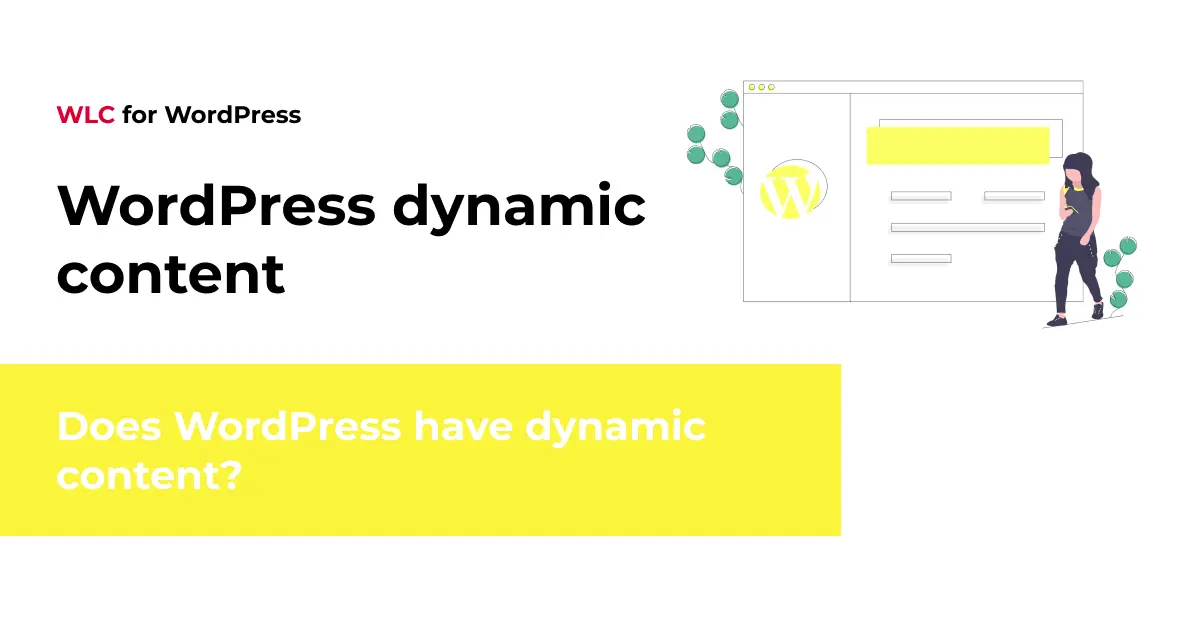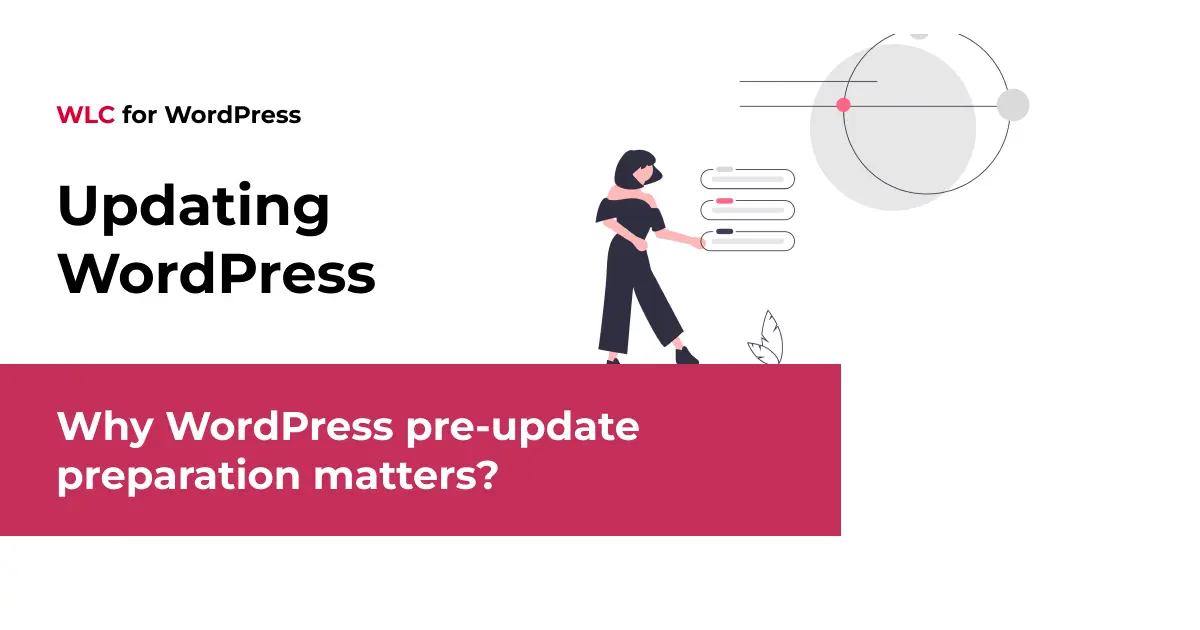Category: WordPress
Does WordPress have dynamic content?

Have you ever wondered why some websites feel alive and constantly fresh while others remain static and unchanging? The answer lies in understanding dynamic content – the invisible engine that powers modern web experiences. WordPress, the world’s most popular content management system, excels at delivering dynamic content that responds to user interactions, database changes, and real-time conditions.
Whether you’re building a simple blog or a complex custom WordPress website, grasping how dynamic content works will transform your approach to web development. This comprehensive guide will take you through WordPress’s dynamic capabilities, from basic concepts to advanced implementation techniques that professional developers use to create engaging, personalised user experiences.
Understanding WordPress dynamic content fundamentals
At its core, dynamic content refers to web page elements that change automatically based on various factors such as user behaviour, database updates, time, or specific conditions. Unlike static content that remains the same for every visitor, dynamic content adapts and responds to create unique experiences.
Think of dynamic content as a conversation rather than a monologue. When you visit an e-commerce site and see “Welcome back, Sarah!” along with personalised product recommendations, you’re experiencing dynamic content in action. The website pulls your name from its database and displays products based on your browsing history.
WordPress generates dynamic content through its database-driven architecture. Every post, page, comment, and user detail lives in a MySQL database. When someone visits your site, WordPress queries this database, retrieves the relevant information, and assembles it into the final web page using PHP templates.
The beauty of WordPress lies in its ability to transform static HTML templates into living, breathing websites that respond intelligently to user needs and content changes.
How does WordPress generate dynamic content?
WordPress’s dynamic content generation relies on a sophisticated yet elegant system involving several key components working in harmony. Understanding this process is crucial for anyone involved in WordPress custom development.
The WordPress loop
The heart of WordPress’s dynamic content system is The Loop – a PHP code structure that retrieves posts from the database and displays them according to your specifications. The Loop automatically handles the heavy lifting of database queries, making it remarkably simple to display dynamic content.
When a user requests a page, WordPress determines what content to show based on the URL structure. For a blog post, it queries the database for that specific post’s content, metadata, and associated information like comments or categories.
Template hierarchy
WordPress uses a template hierarchy system that determines which PHP file to use for different types of content. This system allows for incredible flexibility – you can have different layouts for blog posts, pages, category archives, or custom post types, all generating content dynamically from the same database.
The template hierarchy follows a predictable pattern, starting with the most specific template and falling back to more general ones. This means you can create highly customised experiences for different content types whilst maintaining consistency across your site.
What are WordPress’s built-in dynamic features?
WordPress comes packed with dynamic features that most users take for granted. These built-in capabilities demonstrate the platform’s inherent dynamic nature and provide the foundation for more complex customisations.
| Feature | Dynamic Behaviour | User Benefit |
|---|---|---|
| Posts & Pages | Automatically display latest content, archive by date/category | Fresh content without manual updates |
| Comments | Real-time user interaction, threaded discussions | Community engagement |
| Menus | Conditional display, user role-based visibility | Personalised navigation |
| Widgets | Context-aware content blocks | Relevant sidebar information |
Custom fields represent one of WordPress’s most powerful dynamic features. They allow you to attach additional data to posts and pages, which can then be displayed conditionally. Imagine a property listing site where each post includes dynamic fields for price, location, and amenities – all pulling from the database to create rich, structured content.
The taxonomy system (categories and tags) creates dynamic relationships between content pieces. When you click a category link, WordPress dynamically generates a page showing all posts in that category, complete with pagination and sorting options.
Implementing custom dynamic content solutions
Moving beyond WordPress’s built-in features opens up a world of possibilities for creating truly bespoke dynamic experiences. This is where WordPress customisation becomes an art form, allowing developers to craft solutions tailored to specific business requirements.
Custom post types and meta fields
Custom post types extend WordPress beyond simple blogs and pages. You might create a “Products” post type for an e-commerce site, complete with custom meta fields for pricing, specifications, and inventory levels. These fields can then display dynamically throughout your site, updating automatically when you modify the source data.
Hooks and filters
WordPress’s hook system provides incredible flexibility for modifying dynamic content behaviour. Actions allow you to insert custom functionality at specific points in WordPress’s execution, whilst filters let you modify data before it’s displayed. This system enables developers to create sophisticated dynamic behaviours without modifying core WordPress files.
Custom queries
Sometimes you need content that doesn’t follow WordPress’s standard display logic. Custom queries using WP_Query or get_posts() allow you to retrieve and display content based on complex criteria. You might show related products, featured testimonials, or upcoming events – all generated dynamically from your database.
Advanced dynamic content techniques in WordPress
Professional WordPress development often requires sophisticated dynamic content techniques that go beyond basic database queries. These advanced methods create seamless, responsive user experiences that rival custom-built applications.
AJAX implementations
AJAX (Asynchronous JavaScript and XML) allows parts of your page to update without requiring a full page reload. This technique is perfect for features like infinite scroll, live search results, or updating shopping cart contents. WordPress includes built-in AJAX functionality that developers can leverage for custom implementations.
REST API integration
WordPress’s REST API transforms your site into a powerful content delivery system. You can create dynamic content that updates in real-time, build mobile applications that sync with your WordPress database, or integrate with third-party services seamlessly. The REST API makes WordPress truly headless, separating content management from presentation.
Conditional content display
Advanced conditional logic allows you to show different content based on user roles, geographic location, device type, or custom criteria. This personalisation creates more engaging experiences and can significantly improve conversion rates for business websites.
Maximising WordPress dynamic content potential
Understanding WordPress’s dynamic capabilities is just the beginning – the real magic happens when you combine these features strategically to create compelling user experiences. The key lies in thinking beyond individual features and considering how dynamic content serves your broader business objectives.
Performance optimisation becomes crucial when dealing with complex dynamic content. Caching strategies, database optimisation, and efficient query design ensure that your dynamic features enhance rather than hinder user experience. Remember that every database query has a performance cost, so thoughtful implementation is essential.
Maintenance considerations are equally important. Dynamic content systems require ongoing attention to security updates, database optimisation, and content governance. Establishing clear processes for content management and regular system maintenance will keep your dynamic features running smoothly.
The future of WordPress lies in its dynamic capabilities. As user expectations continue to evolve towards more personalised, responsive web experiences, mastering these techniques becomes increasingly valuable. Whether you’re building a simple business site or a complex web application, WordPress’s dynamic content features provide the foundation for creating truly engaging digital experiences that grow with your needs.






